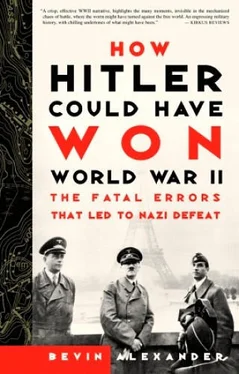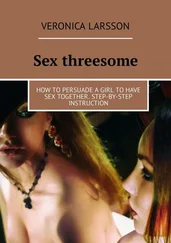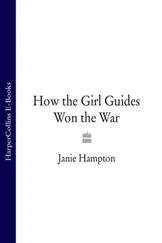p. 76: “‘That’s your affair!’” Das Deutsche Reich und der Zweite Weltkrieg, vol. 3, 617.
p. 77: “‘at one stroke,’ Rommel wrote.” Rommel, 109.
p. 79: “the end of 1941.” Fuller, vol. 3, 419.
p. 79: “‘would have been impossible.’” Rommel, 120.
p. 82: “slightest threat to his dictatorship.” In the purges, beginning in May 1937, at least 30,000 of the Red Army’s 75,000 officers were imprisoned or executed, including the vast majority of senior officers. Another 10,000 were dismissed from the service. See Glantz and House, 11; English and Gudmundsson, 83.
p. 82: “Communist party agents in the army.” These political officers had the power to veto commanders’ orders during the revolutionary wars and disturbances in the 1920s and early 1930s. After 1934 Stalin withdrew this power, reimposed it during the purges, then withdrew it after the Finnish campaign. The commissars were restricted to political education of soldiers and ensuring political conformity among officers. See Keegan, Second World War, 177.
p. 82: “hobbled the German army.” Hitler insisted that all generals understand no holds were to be barred. In March 1941 he laid down the law to the chiefs of all three services and key army field commanders. Halder’s diary recorded Hitler’s words: “The war against Russia will be such that it cannot be conducted in a knightly fashion. This struggle is one of ideologies and racial differences and will have to be conducted with unprecedented, unmerciful, and unrelenting harshness. All officers will have to rid themselves of obsolete ideologies…. I insist that my orders be executed without contradiction. The commissars are the bearers of ideologies directly opposed to National Socialism. Therefore the commissars will be liquidated. German soldiers guilty of breaking international law … will be excused. Russia has not participated in the Hague Convention and therefore has no rights under it.” On May 13, 1941, Keitel issued a new order in the name of the Fuehrer, which limited courts-martial. Civilians suspected of criminal action were to be brought at once before an officer. This officer was to decide whether they were to be shot on the spot. In the case of offenses committed against enemy civilians by Wehrmacht members, prosecution was not obligatory, even where the deed was a military crime. See Shirer, 830–31.
p. 84: “have to defend all three.” Liddell Hart, Strategy, 255.
p. 84: “along the Bug River to Smolensk.” Army Group North had twenty infantry divisions, and three panzer and three motorized divisions, in the 18th Army under George von Küchler, 16th Army (Ernst Busch), and 4th Panzer Group (Erich Hoepner). Army Group Center had thirty-one infantry divisions, nine panzer and seven motorized divisions, and one cavalry division in 9th Army (Adolf Strauss), 4th Army (Günther von Kluge), 2nd Panzer Group (Heinz Guderian), and 3rd Panzer Group (Hermann Hoth). Army Group South had thirty infantry divisions, and five panzer and four motorized divisions, in 6th Army (Walther von Reichenau), 17th Army (Karl Heinrich von Stülpnagel), and 1st Panzer Group (Ewald von Kleist). Attached were the 3rd Italian Corps of four divisions, a Hungarian corps, a Slovak division, and a Croatian regiment. To protect the right flank of Army Group South were the 11th Army made up of Romanian and German forces, and the 3rd and 4th Romanian Armies, nominally under the command of Ion Antonescu, the Romanian dictator. The Finns in the north had sixteen divisions (150,000 men), assisted by four German divisions, two infantry, two motorized. In the German general reserve were twenty-four infantry divisions, and two panzer and two motorized divisions. See Fuller, vol. 3, 424.
p. 86: “‘of armaments manufacture, Moscow.’” Guderian, 515. Hitler’s entire Directive 21 of December 18, 1940, is reprinted in Guderian, appendix 22, 514–16. The essential elements also are in Fuller, vol. 3, 421–24.
p. 87: “‘were all grossly underestimated.’” Guderian, 261.
p. 88: “enemy flanks to create caldrons.” Count Alfred von Schlieffen, chief of the German General Staff 1891–1905, sought to achieve modern Cannaes in Vernichtungskriege, or “wars of annihilation.” The aim was to avoid frontal attacks by deep, concentric encircling movements around enemy flanks with infantry armies to drive enemy forces into pockets where they had to surrender or be annihilated. Blitzkrieg was different. Its principal element was a deep penetration through a narrow gap punched into the enemy’s line. The aims were to paralyze the enemy’s ability to respond and to gain decisive objectives far in the enemy’s rear. As happened in the campaign in the west in 1940, flanks remained only thinly guarded, or not at all, the speed of the panzer advance acting to prevent enemy reaction. For an analysis of Cannae, see Alexander, 45–48. For a summary of blitzkrieg and caldron battles, see Tarrant 5–7, 12–14, 31.
p. 89: “and 2,770 aircraft.” Shortage of oil was already severely restricting German operations. There was only enough for a small fraction of transport to be motorized, and this limited the number of mobile divisions. Most divisional supply was delivered from railheads by horse and wagon. Fuel shortage to some extent explains the lackadaisical German attitude regarding production of tanks. After the campaign in the west in 1940, Hitler doubled the number of panzer divisions but halved the number of tanks. In 1941 each panzer division (17,000 men) was authorized two or three panzer battalions, or 150–200 tanks, but divisions averaged only about 125. Motorized infantry divisions were slightly smaller, but now were equipped with an armored battalion (about 50 tanks). The typical German infantry division had 15,000 men, in three regiments, plus four horse-drawn artillery battalions. See Glantz and House, 28–29; Liddell Hart, Second World War, 157–58; Fuller, 425; Guderian, 144.
p. 89: “invisible to German intelligence.” The Soviet field army, when the Germans invaded, had six to ten divisions in two rifle corps, one incomplete mechanized corps, but little maintenance support. See Glantz and House, 36–41.
p. 90: “were many more warnings.” Ibid., 41–42; Shirer, 843–44; Keegan, Second World War, 179–80.
p. 90: “‘will be no war.’” Keegan, Second World War, 181.
p. 91: “in the 1940 campaign.” The tank division had 11,000 men in two tank regiments (375 tanks), one motorized rifle regiment, and reconnaissance, antitank, antiaircraft, engineer, and signal battalions. Most tanks were obsolete light models, but a few formations had the new KV-1 heavy and T-34 medium tanks, both vastly superior to the German Mark IIIs and IVs. The Red Army had about 1,800 of these new tanks when the war started. The T-34 weighed 26.5 tons and could travel at 31 mph (against the Mark IV’s 25 tons and 25 mph), and had good armor (45-millimeter front, 40-millimeter sides). It carried a high-velocity 76-millimeter gun compared to the Mark IV’s low-velocity 75-millimeter and the Mark III’s medium-velocity 50-millimeter gun. The 47.5-ton KV-1 also carried a 76-millimeter high-velocity gun, but had 90-millimeter armor. Both tanks were impervious to almost all German weapons, except the 88-millimeter high-velocity antiaircraft gun. Russian mechanized forces were weakened by bad logistic support and poor radios, which made coordinated maneuvers almost impossible. Also, the number of motor vehicles in mechanized corps was extremely low. See Glantz and House, 36; Keegan, Second World War, 177; Liddell Hart, Second World War, 158; Zabecki, vol. 2, 1115–17 (Paul W. Johnson, Robert G. Waite).
Читать дальше


![Джонатан Димблби - Barbarossa - How Hitler Lost the War [calibre]](/books/385421/dzhonatan-dimblbi-barbarossa-how-hitler-lost-the-w-thumb.webp)









